Explore October 2025 global port dwell time data. See which ports and carriers led in efficiency across Antwerp, Busan, Long Beach, Rotterdam, and Singapore.
See which carriers experienced the longest vessel dwell times at major ports in October 2025. Uncover congestion trends and leverage detailed port data to optimize your shipping operations.
Discover which carriers recorded the longest vessel dwell times at major global ports in September 2025. Track changes, identify congestion trends, and access comprehensive port-level data to enhance your shipping decisions.
Unlock the power of maritime data. Our 2025 guide answers the top 10 vessel API questions on rate limits, data accuracy, timestamps, and more for seamless integration.
Discover 5 key insights into global shipping data, from hidden fees like demurrage to the predictive analytics shaping modern logistics.
Discover 5 critical truths about ETA accuracy, carrier adoption, and data integration to choose a visibility platform that makes your supply chain truly predictive. Go beyond the dot on the map
Discover the 5 key takeaways from CMA CGM's acquisition of Freightliner UK. Learn what this major deal means for UK logistics, intermodal transport, and decarbonization.
Get an in-depth analysis of the ZIM container ship incident at the Port of Long Beach. Understand the causes, supply chain impact, and what the maritime industry can learn from this major disruption. Read the latest updates for 2025.
Navigate the complexities of container shipping with confidence. Our 2025 playbook reveals 5 critical realities of modern ocean freight, from solving data integrity issues to mitigating costly delays.
Explore our 2025 guide to the top 10 major Indian ports. Discover rankings, capacity, and the global impact of the biggest ports in India to optimize your shipping strategy.
Explore our 2025 guide to the top 10 major Chinese ports. Discover rankings, capacity, and the global impact of the biggest ports in China to optimize your shipping strategy.
Is your supply chain prepared for 2025? Unlock real-time visibility to proactively manage disruptions, eliminate costly fees, and boost efficiency. Learn how.
Integrate a Vessel Tracking API to gain real-time shipping visibility. Learn how to automate tracking, manage disruptions, and reduce costs in our 2025 guide.
Build a powerful container tracking dashboard for 2025. This guide shows you how to gain real-time supply chain visibility to navigate global shipping uncertainty, reduce costs, and boost efficiency
Reduce port congestion and cut supply chain costs with our 2025 guide on container dwell time. Learn the key stages, see the latest data from major ports, and implement expert strategies to improve logistics efficiency.
Discover which carriers recorded the longest vessel dwell times at major global ports in August 2025. Track changes, identify congestion trends, and access comprehensive port-level data to enhance your shipping decisions.
Learn what ETA (Estimated Time of Arrival) means in shipping, the key factors affecting accuracy, and why predictive ETA is crucial for logistics, port operations, and customer satisfaction.
Discover how LNG tankers work and why real-time vessel tracking is vital for safety, efficiency, and market intelligence. Learn about tracking tools, best practices, and future trends in LNG shipping.
Discover which carriers recorded the longest vessel dwell times at major global ports in July 2025. Track changes, identify congestion trends, and access comprehensive port-level data to enhance your shipping decisions.
SURFF increased customer retention with SeaVantage
Explore China’s top ports in 2025—from Shanghai to Shenzhen—driving global trade with record TEUs, green tech, and unmatched scale. See how they shape shipping’s future.
Discover the top U.S. and North American ports in 2025—ranked by capacity, growth, and global influence. From LA to Savannah, explore how key ports shape trade, tech, and supply chains.
Discover the key factors impacting container dwell time in global shipping—from port congestion and customs delays to technology gaps and supply chain disruptions. Learn practical strategies to reduce delays and improve supply chain efficiency with data-driven insights from SeaVantage’s latest analysis.
Learn how to track container shipments to the Port of Newark in 2025 using real-time tools, APIs, and smart tracking strategies. Avoid demurrage and improve visibility with practical steps and platform insights.
Discover how to track container shipments at the Port of Houston in 2025 using real-time tracking tools, APIs, and automation strategies. Learn how to avoid delays and reduce costs.
Discover which carriers recorded the longest vessel dwell times at major global ports in June 2025. Track changes, identify congestion trends, and access comprehensive port-level data to enhance your shipping decisions.
Explore the top MENA ports of 2025, including Jebel Ali, Salalah, and Tanger Med. See rankings, trade volumes, and their global supply chain impact.
Discover why the Strait of Hormuz remains vital in 2025. Explore current tensions, oil market impacts, shipping risks, and what global stakeholders should watch next.
See which carriers had the longest vessel dwell times in May 2025 at key global ports. Compare trends, spot delays, and access full port data to optimize your shipping strategy.
Discover how the Israel–Iran-US conflict is disrupting global shipping routes. See how SeaVantage helps logistics teams navigate risk with real-time vessel data.
Discover how rising U.S. tariffs and new vessel fees are reshaping trade with China, disrupting U.S. port operations, and accelerating supply chain shifts. Learn how real-time visibility tools like SeaVantage help businesses stay agile in a volatile logistics landscape.
Explore how AIS live vessel tracking powers real-time ship tracker apps. Learn about AIS technology, industry use cases, and the future of maritime analytics.
Explore the latest trends, technologies, and best practices in ocean freight tracking for 2025. Learn how to improve visibility, reduce delays, and integrate smarter tools into your logistics.
Discover how container tracking APIs transform logistics by providing real-time shipment visibility, reducing costs, and enabling smarter, automated supply chain operations. Learn key features, integration steps, and best practices in this 2025 guide.
Explore how the 2025 U.S. tariffs on Chinese imports are impacting global ocean freight. Learn key strategies for carriers, forwarders, and shippers to navigate port congestion, shifting trade lanes, and rising logistics costs—with help from real-time visibility tools like SeaVantage.
Discover how new U.S. port fees on Chinese-built ships could reshape Korea’s shipping and shipbuilding industries—and what it means for global trade.
Discover how IoT cargo monitoring reduces spoilage, damage, and delays across industries. Learn how real-time visibility with SeaVantage protects shipments and improves logistics performance.
Extreme weather is disrupting ocean shipping more than ever, causing delays, rising costs, and supply chain chaos. Discover how real-time visibility tools like SeaVantage help logistics teams predict and adapt to storms, droughts, and port closures—keeping cargo on track and businesses ahead of disruptions.
Discover how poor speed and draught management in shipping can lead to skyrocketing fuel costs, compliance risks, and operational inefficiencies. Learn actionable strategies to optimize vessel performance and save millions.
In this customer success story, Won-chan Cho, Project Manager at KOTRA, discusses the reasons behind the adoption of SeaVantage, its practical applications, and the measurable results achieved.
Discover how port congestion affects bulk carrier bunkering operations, leading to higher fuel costs, delays, and logistical challenges. Learn how real-time tracking and AI-driven solutions can optimize bunkering schedules, reduce fuel consumption, and improve voyage efficiency. Stay ahead with smarter maritime planning.
Discover how real-time weather data enhances vessel tracking and maritime logistics. Learn how AI, AIS, and satellite insights optimize routes, reduce fuel costs, and improve safety.
Enhance your supply chain visibility with IoT-enabled container tracking. Get real-time updates on location, temperature, humidity, and security for seamless logistics management. Reduce delays, prevent losses, and optimize operations with smarter insights.
Boost your business with live container tracking! Real-time shipment visibility isn’t just for big corporations—small businesses can now access affordable tracking solutions to reduce losses, streamline operations, and enhance customer satisfaction.
Discover how live container tracking prevents cargo loss, theft, and damage while reducing insurance costs. Learn about real-time alerts, geofencing, and environmental monitoring to keep your shipments secure from departure to delivery.
Discover how shipping delays impact global supply chains, affecting businesses and consumers alike. Learn about the ripple effects and strategic solutions to navigate logistics challenges.
"Stay ahead in 2025 with CMA CGM's advanced shipment tracking. Learn how to track containers in real-time, get automated alerts, and optimize your logistics. Read now!
Here's a meta description for the article about port infrastructure and technology trends: Discover how ports are evolving with smart technologies, sustainability initiatives, and modular design. Learn about AI-powered automation, renewable energy integration, and flexible infrastructure transforming global maritime hubs into efficient, environmentally-friendly trade centers of the future.
Learn about the Carbon Intensity Indicator (CII), how it measures shipping efficiency, and its impact on shipowners, regulators, and the global supply chain. Discover best practices for reducing carbon emissions in maritime transport and meeting IMO sustainability targets.
Port congestion disrupts global supply chains, causing shipment delays, rising costs, and inventory shortages. Learn what drives congestion, its ripple effects, and how real-time insights from SeaVantage’s Port Insight solution help businesses stay ahead of delays.
Reduce dwell time and optimize container yard efficiency with smart tracking solutions. Discover how real-time visibility, predictive analytics, and IoT integration can streamline operations, cut costs, and enhance supply chain performance. Learn more with SeaVantage.
Discover what a port call in ocean shipping is, its key activities, challenges, and optimization strategies. Learn how efficient port calls impact global trade and maritime logistics.
Learn everything about TEU (Twenty-foot Equivalent Unit) in ocean shipping with our comprehensive guide. Discover how TEU is calculated, why it matters in global trade, and how it impacts vessel capacity, port operations, and freight costs. Stay ahead in logistics with expert insights on TEU vs. FEU, shipping optimization, and industry trends.
This customer interview features HMM, a key player in the global shipping industry. By implementing SeaVantage's SVMP solution, HMM has enhanced real-time information delivery and operational efficiency.
Vessel identification is crucial for maritime safety, security, and regulatory compliance. Ships worldwide use unique identification numbers to ensure smooth tracking and communication. Two of the most important identifiers are the Maritime Mobile Service Identity (MMSI) and International Maritime Organization (IMO) numbers.
Blank sailing and cargo rollover can disrupt your supply chain and delay shipments. Learn how these issues impact container tracking and discover actionable strategies to mitigate risks and improve shipping reliability
Learn how container tracking milestones improve supply chain visibility and efficiency. Discover key shipping stages, overcome tracking challenges, and optimize your logistics operations. Essential guide for shipping professionals.
Learn how MSC and SeaVantage enhance visibility, optimize supply chains, and ensure timely deliveries. Track your shipments with SeaVantage using advanced tools and real-time updates.
This comprehensive guide unpacks the essentials of shipment tracking, providing a step-by-step approach to monitor cargo from the port of origin through transshipment points to the final destination.
Discover how real-world geopolitical scenarios are affecting maritime logistics learn how advanced tracking technologies play a pivotal role in maintaining supply chain resilience.
The maritime industry is the backbone of global trade, with over 80% of goods being transported by sea. Vessel tracking, an integral part of maritime logistics, has evolved significantly in recent years. As we move into 2025, advancements in technology and changing market dynamics are setting the stage for a transformative era in vessel tracking.
Discover how SeaVantage transforms 2PL logistics with advanced ocean freight solutions. Enhance visibility, streamline operations, and deliver superior service with cutting-edge technology.
In the fast-paced world of global trade, container tracking is not just a convenience; it’s a necessity. For supply chain managers and logistics professionals, the ability to monitor shipments in real time can make the difference between on-time deliveries and costly delays. Two critical tracking methods dominate the field: tracking by container number and tracking by master bill of lading (MBL). But which approach is best suited for your needs? In this article, we’ll explore these two methods, comparing their strengths, weaknesses, and the contexts in which they excel.
In a world where global trade drives economies, tracking shipping containers accurately is key for good supply chain management. Imagine knowing the exact location and condition of your shipment at any time. This level of visibility improves efficiency and builds trust among all parties involved.
Learn how to track your shipments and get real-time updates through COSCO Shipping lines and third-party platforms like SeaVantage for complete shipment visibility and efficiency.
Real-time data enhances supply chain visibility by enabling end-to-end tracking, eliminating bottlenecks, and improving efficiency through predictive analytics.
Discover the essentials of supply chain visibility, its importance in modern logistics, and how real-time insights can enhance efficiency and customer satisfaction.
Delve into 2024’s major supply chain disruptions, from geopolitical tensions to climate-induced disasters, and learn how industries adapted to maintain resilience.
Shipping is the backbone of global trade, mobilizing everything from electronics to fresh produce across oceans. But, were you aware that smart tracking solutions are highly essential for aiding the protection of the environment? By employing advanced technology to monitor and optimize shipping, we can reduce waste, cut carbon emissions, and promote more sustainable practices. Let’s explore how this works and why it matters for the future of our planet.
Thousands of vessels navigate the waters daily, transporting essential goods, fuels, and even vehicles that keep the world up and running. Have you ever wondered what keeps this chaos at bay? That's where the Automatic Identification System (AIS) comes in, thought of as the silent superhero when it comes to marine logistics. Let's dive deep to see exactly how this modest technology keeps global commerce on course, smooth and sure.
Long dwell time can sound like a minor hiccup in logistics, but it most certainly has the potential to spiral upwards and become a major efficiency killer. Be it idle trucks, delayed shipment, or eating into costly fees, take control.
In the global supply chain, few terms carry as much weight as ETA (Estimated Time of Arrival). Whether you’re waiting for a package or managing cargo for a company, ETA is at the heart of every process. Let’s explore how this simple acronym keeps global trade running smoothly.
Global supply chains are on edge as President-elect Donald Trump has proposed significant tariff hikes. His plan includes a 25% tariff on imports from Canada and Mexico, and 10% on goods from China, which could disrupt logistics operations and supply chains around the world.
The rise of AI-driven SaaS solutions has dramatically changed modern freight forwarding. Gone are the days of manual processes and endless paperwork. Now, AI technology is upstaging the status quo helping freight forwarders streamline operations, reduce errors, and deliver faster results.
Read about how IoT cargo monitoring systems are preventing maritime disasters through real-time temperature, humidity & location tracking. Learn about SeaVantage's cutting-edge container safety solution.
The late October 2024 DANA storm that swept over the eastern and southern parts of Spain has left its mark indelibly on the country's infrastructure: it caused flooding across the board and seriously disrupted port operations. DANA (Depresión Aislada en Niveles Altos) stands for short isolated high-altitude depressions which, together with the warmth of Mediterranean moisture, cause heavy storms in a very localized manner.
Gain firsthand insights into how Phelix Shipping Ventures harnessed SeaVantage's cutting-edge vessel tracking solution to drive measurable results. Download this success story to see how SeaVantage’s Ship Insight platform can transform operational efficiency in the maritime industry.
A series of labor disputes are causing significant disruptions at some of Canada’s busiest ports, including the Port of Vancouver, Port of Prince Rupert, and the Port of Montreal. These tensions have led to lockouts and strikes that are already affecting container traffic, trade flows, and operations across North America.
Per diem container charges are daily fees applied by shipping lines for the use of their containers beyond the agreed free time period. These charges typically range from $75 to $300 per container per day, depending on container type and location.
In recent years, extreme weather has presented serious and costly challenges for supply chains worldwide. By 2024, the frequency of billion-dollar weather events in the United States alone has increased, occurring every three weeks on average—a stark contrast to once every four months in the 1980s.
The world runs on ocean freight—over 90% of goods rely on maritime transport. That's a staggering amount of cargo moving across the globe, and transshipment plays a pivotal role in this massive operation. But what exactly is transshipment, and why is it so important?
Did you know that in 2021, the average waiting time for container ships at the Port of Los Angeles reached a staggering 8 days? This is a stark contrast to the 2.5 days recorded in 2019. Port congestion has become a major bottleneck in global trade, affecting everything from shipping costs to product availability. As ports like Singapore, Rotterdam, and Los Angeles struggle to keep up with demand, the ripple effects are felt across industries worldwide.
Recent events have underscored the critical importance of supply chain visibility, pushing businesses to reevaluate their strategies and invest in more robust, data-driven approaches.
Shipping container tracking refers to the methodologies and technologies employed to monitor the movement and status of containers throughout their journey. It involves collecting data on location, condition, and historical movement, ensuring stakeholders have real-time visibility into their cargo's journey.
The clock is ticking for U.S. East and Gulf Coast ports as a potential strike by the International Longshoremen's Association (ILA) looms on October 1st. With talks between the union and port operators at an impasse, the prospect of widespread port closures grows more likely by the day.
The year 2024 has witnessed a combination of unprecedented disruptions that have significantly impeded the international shipping industry's operations. The latest includes this report by Global Maritime Risk Management expert, Ambrey, which details escalating military tensions in Lybia particularly around oil production and control, which pose a significant threat to the stability of Libya and could lead to localized conflict, impacting oil markets and regional security.
As geopolitical tensions disrupt traditional shipping lanes, particularly in the Red Sea, the maritime industry is turning its gaze northward. The Northern Sea Route (NSR) is emerging as a viable alternative, promising to reshape global trade routes and maritime logistics.
If you are involved in the import/export business, you may have heard of ‘ship tracking’ or have tried tracking it yourself. Through ship location tracking, people want to know where my or my customer’s cargo is on the sea, which route it takes, where it transits, etc. And consequently, the cargo’s arrival time. In addition, ship tracking will also be able to identify cargo delays and variable situations that frequently occur in maritime transportation in advance and prepare for them so that there are no disruptions to the logistics plan.
What happens when the world's busiest waterways become choke points for global trade? In 2024, we've witnessed this scenario unfold dramatically with the ongoing crisis in the Red Sea and Suez Canal, where Houthi attacks on commercial vessels have forced many ships to reroute around Africa. This situation together with other recent events has reignited concerns about port congestion on a global scale, highlighting the fragility of our interconnected supply chains. As businesses and consumers grapple with the ripple effects of these disruptions, understanding the causes of port congestion and developing strategies to mitigate its impact has never been more crucial. This article delves into the complexities of port congestion and introduces how SeaVantage Port Insight can help businesses navigate these turbulent waters in an increasingly unpredictable global trade landscape.
Shipping carriers are the backbone of this industry, ensuring the efficient and timely delivery of cargo, thereby supporting global economic growth. This article aims to highlight the ten largest shipping carriers in the world, providing a detailed look into their operations, fleet sizes, and recent developments. The global shipping industry is a crucial component of international trade, handling the transportation of goods across oceans and connecting markets worldwide.
The global container shipping industry is a cornerstone of international trade, enabling the efficient movement of goods across continents. Container terminal operators play a crucial role in this industry, providing the infrastructure and services needed to handle the vast volumes of cargo that traverse the world's oceans. These operators manage the ports where containers are loaded and unloaded, ensuring the smooth flow of trade and logistics. This article aims to highlight the top 10 container terminal operators worldwide, showcasing their significance in the global supply chain.
In an unprecedented turn of events, a faulty update from cybersecurity giant Crowdstrike recently triggered what is being called the largest global IT outage in history. The update, intended to bolster security, instead crashed Microsoft's operating system, leading to widespread disruptions across various sectors, most notably in air freight and maritime operations.
The shipping industry has been closely monitoring the dramatic surge in spot container freight rates in recent weeks. However, the latest data suggests this upward trend may be losing steam, for now. Here's the current state of affairs and what it might mean for the market.
SeaVantage secures a $2.3 million investment from HD Hyundai Marine Solution to enhance AI-driven maritime analytics, aiming to revolutionize supply chain visibility and sustainability.
In today's complex global supply chains, simply tracking shipments is no longer enough. The recent Red Sea blockade has served as a wake-up call for the shipping industry: traditional tracking methods fall woefully short in an era of geopolitical uncertainty and supply chain volatility. From predicting ETA changes due to route diversions to managing port congestion caused by sudden influxes of rerouted vessels, ocean visibility has emerged as a critical tool for navigating these turbulent waters.
Demurrage and detention are often used interchangeably in logistics; however, these terms refer to distinct concepts, even though they are closely linked. While both can involve charges, there are strategies to significantly reduce or avoid these costs in your supply chain.
Container shipping is a cornerstone of global trade, enabling the efficient movement of goods across the world's oceans. Container ships, with their standardized containers, have revolutionized the logistics industry since their introduction in the mid-20th century, streamlining the process of loading, transporting, and unloading goods.
In today's competitive world market, knowing exactly where your shipment is at all times is more critical than ever. The ability to track and manage the movement of goods across the world with precision and real-time updates can make the difference between a thriving business and a struggling one.
New regulations from the Federal Maritime Commission (FMC) aim to enhance transparency and fairness in demurrage and detention billing. These changes impact the issuance of invoices, designate the recipients, and address dispute resolution procedures.
Ocean shipping is integral to global trade, enabling the movement of goods across vast distances efficiently and cost-effectively. The key facilitators in this system are container ports and terminals, which manage the flow of goods between sea transport and land-based transport methods like trucks and trains.
Explore October 2025 global port dwell time data. See which ports and carriers led in efficiency across Antwerp, Busan, Long Beach, Rotterdam, and Singapore.
Unlock the power of maritime data. Our 2025 guide answers the top 10 vessel API questions on rate limits, data accuracy, timestamps, and more for seamless integration.
Discover 5 key insights into global shipping data, from hidden fees like demurrage to the predictive analytics shaping modern logistics.
Discover 5 critical truths about ETA accuracy, carrier adoption, and data integration to choose a visibility platform that makes your supply chain truly predictive. Go beyond the dot on the map
Discover the 5 key takeaways from CMA CGM's acquisition of Freightliner UK. Learn what this major deal means for UK logistics, intermodal transport, and decarbonization.
Get an in-depth analysis of the ZIM container ship incident at the Port of Long Beach. Understand the causes, supply chain impact, and what the maritime industry can learn from this major disruption. Read the latest updates for 2025.
Navigate the complexities of container shipping with confidence. Our 2025 playbook reveals 5 critical realities of modern ocean freight, from solving data integrity issues to mitigating costly delays.
Integrate a Vessel Tracking API to gain real-time shipping visibility. Learn how to automate tracking, manage disruptions, and reduce costs in our 2025 guide.
Build a powerful container tracking dashboard for 2025. This guide shows you how to gain real-time supply chain visibility to navigate global shipping uncertainty, reduce costs, and boost efficiency
Discover how LNG tankers work and why real-time vessel tracking is vital for safety, efficiency, and market intelligence. Learn about tracking tools, best practices, and future trends in LNG shipping.
Discover the key factors impacting container dwell time in global shipping—from port congestion and customs delays to technology gaps and supply chain disruptions. Learn practical strategies to reduce delays and improve supply chain efficiency with data-driven insights from SeaVantage’s latest analysis.
Learn how to track container shipments to the Port of Newark in 2025 using real-time tools, APIs, and smart tracking strategies. Avoid demurrage and improve visibility with practical steps and platform insights.
Discover how to track container shipments at the Port of Houston in 2025 using real-time tracking tools, APIs, and automation strategies. Learn how to avoid delays and reduce costs.
Explore the top MENA ports of 2025, including Jebel Ali, Salalah, and Tanger Med. See rankings, trade volumes, and their global supply chain impact.
Discover why the Strait of Hormuz remains vital in 2025. Explore current tensions, oil market impacts, shipping risks, and what global stakeholders should watch next.
Discover how the Israel–Iran-US conflict is disrupting global shipping routes. See how SeaVantage helps logistics teams navigate risk with real-time vessel data.
Discover how rising U.S. tariffs and new vessel fees are reshaping trade with China, disrupting U.S. port operations, and accelerating supply chain shifts. Learn how real-time visibility tools like SeaVantage help businesses stay agile in a volatile logistics landscape.
Explore how AIS live vessel tracking powers real-time ship tracker apps. Learn about AIS technology, industry use cases, and the future of maritime analytics.
Explore the latest trends, technologies, and best practices in ocean freight tracking for 2025. Learn how to improve visibility, reduce delays, and integrate smarter tools into your logistics.
Discover how container tracking APIs transform logistics by providing real-time shipment visibility, reducing costs, and enabling smarter, automated supply chain operations. Learn key features, integration steps, and best practices in this 2025 guide.
Explore how the 2025 U.S. tariffs on Chinese imports are impacting global ocean freight. Learn key strategies for carriers, forwarders, and shippers to navigate port congestion, shifting trade lanes, and rising logistics costs—with help from real-time visibility tools like SeaVantage.
Discover how new U.S. port fees on Chinese-built ships could reshape Korea’s shipping and shipbuilding industries—and what it means for global trade.
Discover how IoT cargo monitoring reduces spoilage, damage, and delays across industries. Learn how real-time visibility with SeaVantage protects shipments and improves logistics performance.
Extreme weather is disrupting ocean shipping more than ever, causing delays, rising costs, and supply chain chaos. Discover how real-time visibility tools like SeaVantage help logistics teams predict and adapt to storms, droughts, and port closures—keeping cargo on track and businesses ahead of disruptions.
Discover how poor speed and draught management in shipping can lead to skyrocketing fuel costs, compliance risks, and operational inefficiencies. Learn actionable strategies to optimize vessel performance and save millions.
Discover how port congestion affects bulk carrier bunkering operations, leading to higher fuel costs, delays, and logistical challenges. Learn how real-time tracking and AI-driven solutions can optimize bunkering schedules, reduce fuel consumption, and improve voyage efficiency. Stay ahead with smarter maritime planning.
Discover how real-time weather data enhances vessel tracking and maritime logistics. Learn how AI, AIS, and satellite insights optimize routes, reduce fuel costs, and improve safety.
Boost your business with live container tracking! Real-time shipment visibility isn’t just for big corporations—small businesses can now access affordable tracking solutions to reduce losses, streamline operations, and enhance customer satisfaction.
Discover how live container tracking prevents cargo loss, theft, and damage while reducing insurance costs. Learn about real-time alerts, geofencing, and environmental monitoring to keep your shipments secure from departure to delivery.
Discover how shipping delays impact global supply chains, affecting businesses and consumers alike. Learn about the ripple effects and strategic solutions to navigate logistics challenges.
"Stay ahead in 2025 with CMA CGM's advanced shipment tracking. Learn how to track containers in real-time, get automated alerts, and optimize your logistics. Read now!
Here's a meta description for the article about port infrastructure and technology trends: Discover how ports are evolving with smart technologies, sustainability initiatives, and modular design. Learn about AI-powered automation, renewable energy integration, and flexible infrastructure transforming global maritime hubs into efficient, environmentally-friendly trade centers of the future.
Learn about the Carbon Intensity Indicator (CII), how it measures shipping efficiency, and its impact on shipowners, regulators, and the global supply chain. Discover best practices for reducing carbon emissions in maritime transport and meeting IMO sustainability targets.
Port congestion disrupts global supply chains, causing shipment delays, rising costs, and inventory shortages. Learn what drives congestion, its ripple effects, and how real-time insights from SeaVantage’s Port Insight solution help businesses stay ahead of delays.
Reduce dwell time and optimize container yard efficiency with smart tracking solutions. Discover how real-time visibility, predictive analytics, and IoT integration can streamline operations, cut costs, and enhance supply chain performance. Learn more with SeaVantage.
Discover what a port call in ocean shipping is, its key activities, challenges, and optimization strategies. Learn how efficient port calls impact global trade and maritime logistics.
Learn everything about TEU (Twenty-foot Equivalent Unit) in ocean shipping with our comprehensive guide. Discover how TEU is calculated, why it matters in global trade, and how it impacts vessel capacity, port operations, and freight costs. Stay ahead in logistics with expert insights on TEU vs. FEU, shipping optimization, and industry trends.
Vessel identification is crucial for maritime safety, security, and regulatory compliance. Ships worldwide use unique identification numbers to ensure smooth tracking and communication. Two of the most important identifiers are the Maritime Mobile Service Identity (MMSI) and International Maritime Organization (IMO) numbers.
Blank sailing and cargo rollover can disrupt your supply chain and delay shipments. Learn how these issues impact container tracking and discover actionable strategies to mitigate risks and improve shipping reliability
Learn how container tracking milestones improve supply chain visibility and efficiency. Discover key shipping stages, overcome tracking challenges, and optimize your logistics operations. Essential guide for shipping professionals.
Learn how MSC and SeaVantage enhance visibility, optimize supply chains, and ensure timely deliveries. Track your shipments with SeaVantage using advanced tools and real-time updates.
Discover how real-world geopolitical scenarios are affecting maritime logistics learn how advanced tracking technologies play a pivotal role in maintaining supply chain resilience.
The maritime industry is the backbone of global trade, with over 80% of goods being transported by sea. Vessel tracking, an integral part of maritime logistics, has evolved significantly in recent years. As we move into 2025, advancements in technology and changing market dynamics are setting the stage for a transformative era in vessel tracking.
Discover how SeaVantage transforms 2PL logistics with advanced ocean freight solutions. Enhance visibility, streamline operations, and deliver superior service with cutting-edge technology.
In a world where global trade drives economies, tracking shipping containers accurately is key for good supply chain management. Imagine knowing the exact location and condition of your shipment at any time. This level of visibility improves efficiency and builds trust among all parties involved.
Learn how to track your shipments and get real-time updates through COSCO Shipping lines and third-party platforms like SeaVantage for complete shipment visibility and efficiency.
Real-time data enhances supply chain visibility by enabling end-to-end tracking, eliminating bottlenecks, and improving efficiency through predictive analytics.
Discover the essentials of supply chain visibility, its importance in modern logistics, and how real-time insights can enhance efficiency and customer satisfaction.
Delve into 2024’s major supply chain disruptions, from geopolitical tensions to climate-induced disasters, and learn how industries adapted to maintain resilience.
Shipping is the backbone of global trade, mobilizing everything from electronics to fresh produce across oceans. But, were you aware that smart tracking solutions are highly essential for aiding the protection of the environment? By employing advanced technology to monitor and optimize shipping, we can reduce waste, cut carbon emissions, and promote more sustainable practices. Let’s explore how this works and why it matters for the future of our planet.
Thousands of vessels navigate the waters daily, transporting essential goods, fuels, and even vehicles that keep the world up and running. Have you ever wondered what keeps this chaos at bay? That's where the Automatic Identification System (AIS) comes in, thought of as the silent superhero when it comes to marine logistics. Let's dive deep to see exactly how this modest technology keeps global commerce on course, smooth and sure.
Long dwell time can sound like a minor hiccup in logistics, but it most certainly has the potential to spiral upwards and become a major efficiency killer. Be it idle trucks, delayed shipment, or eating into costly fees, take control.
Global supply chains are on edge as President-elect Donald Trump has proposed significant tariff hikes. His plan includes a 25% tariff on imports from Canada and Mexico, and 10% on goods from China, which could disrupt logistics operations and supply chains around the world.
The rise of AI-driven SaaS solutions has dramatically changed modern freight forwarding. Gone are the days of manual processes and endless paperwork. Now, AI technology is upstaging the status quo helping freight forwarders streamline operations, reduce errors, and deliver faster results.
Read about how IoT cargo monitoring systems are preventing maritime disasters through real-time temperature, humidity & location tracking. Learn about SeaVantage's cutting-edge container safety solution.
The late October 2024 DANA storm that swept over the eastern and southern parts of Spain has left its mark indelibly on the country's infrastructure: it caused flooding across the board and seriously disrupted port operations. DANA (Depresión Aislada en Niveles Altos) stands for short isolated high-altitude depressions which, together with the warmth of Mediterranean moisture, cause heavy storms in a very localized manner.
A series of labor disputes are causing significant disruptions at some of Canada’s busiest ports, including the Port of Vancouver, Port of Prince Rupert, and the Port of Montreal. These tensions have led to lockouts and strikes that are already affecting container traffic, trade flows, and operations across North America.
In recent years, extreme weather has presented serious and costly challenges for supply chains worldwide. By 2024, the frequency of billion-dollar weather events in the United States alone has increased, occurring every three weeks on average—a stark contrast to once every four months in the 1980s.
Did you know that in 2021, the average waiting time for container ships at the Port of Los Angeles reached a staggering 8 days? This is a stark contrast to the 2.5 days recorded in 2019. Port congestion has become a major bottleneck in global trade, affecting everything from shipping costs to product availability. As ports like Singapore, Rotterdam, and Los Angeles struggle to keep up with demand, the ripple effects are felt across industries worldwide.
Recent events have underscored the critical importance of supply chain visibility, pushing businesses to reevaluate their strategies and invest in more robust, data-driven approaches.
The clock is ticking for U.S. East and Gulf Coast ports as a potential strike by the International Longshoremen's Association (ILA) looms on October 1st. With talks between the union and port operators at an impasse, the prospect of widespread port closures grows more likely by the day.
The year 2024 has witnessed a combination of unprecedented disruptions that have significantly impeded the international shipping industry's operations. The latest includes this report by Global Maritime Risk Management expert, Ambrey, which details escalating military tensions in Lybia particularly around oil production and control, which pose a significant threat to the stability of Libya and could lead to localized conflict, impacting oil markets and regional security.
As geopolitical tensions disrupt traditional shipping lanes, particularly in the Red Sea, the maritime industry is turning its gaze northward. The Northern Sea Route (NSR) is emerging as a viable alternative, promising to reshape global trade routes and maritime logistics.
If you are involved in the import/export business, you may have heard of ‘ship tracking’ or have tried tracking it yourself. Through ship location tracking, people want to know where my or my customer’s cargo is on the sea, which route it takes, where it transits, etc. And consequently, the cargo’s arrival time. In addition, ship tracking will also be able to identify cargo delays and variable situations that frequently occur in maritime transportation in advance and prepare for them so that there are no disruptions to the logistics plan.
What happens when the world's busiest waterways become choke points for global trade? In 2024, we've witnessed this scenario unfold dramatically with the ongoing crisis in the Red Sea and Suez Canal, where Houthi attacks on commercial vessels have forced many ships to reroute around Africa. This situation together with other recent events has reignited concerns about port congestion on a global scale, highlighting the fragility of our interconnected supply chains. As businesses and consumers grapple with the ripple effects of these disruptions, understanding the causes of port congestion and developing strategies to mitigate its impact has never been more crucial. This article delves into the complexities of port congestion and introduces how SeaVantage Port Insight can help businesses navigate these turbulent waters in an increasingly unpredictable global trade landscape.
In an unprecedented turn of events, a faulty update from cybersecurity giant Crowdstrike recently triggered what is being called the largest global IT outage in history. The update, intended to bolster security, instead crashed Microsoft's operating system, leading to widespread disruptions across various sectors, most notably in air freight and maritime operations.
The shipping industry has been closely monitoring the dramatic surge in spot container freight rates in recent weeks. However, the latest data suggests this upward trend may be losing steam, for now. Here's the current state of affairs and what it might mean for the market.
SeaVantage secures a $2.3 million investment from HD Hyundai Marine Solution to enhance AI-driven maritime analytics, aiming to revolutionize supply chain visibility and sustainability.
In today's complex global supply chains, simply tracking shipments is no longer enough. The recent Red Sea blockade has served as a wake-up call for the shipping industry: traditional tracking methods fall woefully short in an era of geopolitical uncertainty and supply chain volatility. From predicting ETA changes due to route diversions to managing port congestion caused by sudden influxes of rerouted vessels, ocean visibility has emerged as a critical tool for navigating these turbulent waters.
Demurrage and detention are often used interchangeably in logistics; however, these terms refer to distinct concepts, even though they are closely linked. While both can involve charges, there are strategies to significantly reduce or avoid these costs in your supply chain.
In today's competitive world market, knowing exactly where your shipment is at all times is more critical than ever. The ability to track and manage the movement of goods across the world with precision and real-time updates can make the difference between a thriving business and a struggling one.
New regulations from the Federal Maritime Commission (FMC) aim to enhance transparency and fairness in demurrage and detention billing. These changes impact the issuance of invoices, designate the recipients, and address dispute resolution procedures.
The recent collision between the Singapore-flagged large container ship 'Dali' and the Francis Scott Key Bridge has resulted in significant losses for ocean shipping, particularly, impacting operations at the Port of Baltimore. With ship traffic suspended indefinitely, the aftermath of this incident has left six individuals missing and resulted in daily economic losses estimated at $15 million.
At SeaVantage, we understand the importance of staying ahead of the curve in the ever-evolving world of shipping and logistics. That's why we're excited to share key takeaways from the recent Transpacific Maritime Conference (TPM24), where industry experts shed light on the challenges and opportunities shaping today's trade landscape.
The recent disruptions in the Red Sea and Panama Canal Drought have sent ripples through the global shipping industry, causing significant impacts on established routes and compelling vessels to reroute. This has introduced a complex web of challenges for vessels transiting through these regions. In such turbulent times, monitoring vessels becomes critical for businesses involved in maritime trade.
Since December 15, 2023, a series of attacks by Houthi rebels in Yemen have targeted multiple container vessels in the Red Sea. Here is the most recent update as of December 29th on the ongoing situation around the Red Sea.
In the ever-evolving landscape of global logistics, the optimization of operations hinges significantly on the sophisticated orchestration of Application Programming Interface (API) Integration. Within SeaVantage, our unwavering commitment to operational excellence is centered on leveraging the inherent transformative capabilities of seamless API integration.
When it comes to managing complex supply chains, you've probably heard the old saying, "You can't manage what you can't see." In today's ever-changing world, this wisdom holds truer than ever. From geopolitical tensions to climate change, and congested ports, knowing what's happening and where is the key to effective management and communication with stakeholders.
The Ukraine crisis and the COVID-19 pandemic impacted global supply chains significantly in 2022, highlighting the importance of being prepared for unexpected disruptions and the need for agility and flexibility in managing these challenges. The Russia/Ukraine war disrupted trade and transportation routes, resulting in delays and increased costs for businesses that rely on imports and exports between the two countries. The ports of Mariupol and Odesa, key transit points for goods in Ukraine were disrupted and had to shut down by the conflict.
Despite the fact that almost everyone has a GPS tracking device in their pocket, tracking the location and status of vessels and containers continue to be one of the top challenges facing freight forwarders in the shipping industry.
Over the past few years, real-time shipping visibility has become increasingly important. The ocean moves around 90% of global trade however visibility in this sector, compared to over-the-road shipments, is more complex and usually filled with multiple unknown blind spots. Unexpected delays for over-the-road shipments via trucks usually add just a day or two to the overall transit time.
Ocean freight visibility allows shippers to monitor the real-time status and location of their container shipments along the long ocean journey. Visibility providers generally use multiple forms of maritime and supply chain data to deliver real-time insights on the location of vessels and containers. Other sophisticated visibility platforms like SeaVantage provide advanced visibility into shipments such as the predicted ETAs of containers, a granular view of what happens in and around global ports and terminals, and more.
With the world ticking closer and closer to the holidays, a massive influx of orders and proceeding shipments are inevitable. Thanksgiving, Halloween, and of course Christmas means that millions of packages will be passing through your gates and into countries all over the world.
Across Europe, workers at various sea ports have been on a continuous strike. What does this mean for ocean shippers? What about the workers themselves? This article covers the recent strikes across European ports, as well as the port congestion issues that have resulted from these global developments.
Gaining access to accurate ocean freight visibility has never been more crucial than it is today. News about China's Covid lockdowns led to multiple speculations and trending reports about tremendous congestion in Shanghai and other Asian ports. However, visibility data from SeaVantage Maritime Platform revealed a different picture of the situation of China’s ports. The extended lockdown in Shanghai resulted in some congestion in the port of Shanghai however not as severe as other trending images revealed. What actually happened?
China's rising covid cases and lockdowns due to the omicron variant have been increasing the number of vessels waiting outside the country's ports. Initial lockdowns were placed on Shanghai, the country's largest city, from March 28 to April 5.
Why Sanctions on Russia?The United States along with the G7 and the EU announced additional economic sanctions against Russia on April 6th for its brutality in Ukraine, particularly in Bucha.
China is implementing a two-phase lockdown in Shanghai, the country's most populous city and financial capital with a population of about 26 million people.The citywide two-phase lockdown testing will be conducted in two rounds. Tests will be conducted on the eastern side of the city from March 28 to April 1, and on the western side of the city from April 1 to April 5. This phased locked down means that half of the city will remain functioning at a time.
The invasion of Ukraine by Russian troops has led to multiple fast-changing developments in global ocean supply chains that are still reeling from the ongoing pandemic. Stakeholders are bracing for the potential impacts of this conflict on shipments, freight rates, and additional logistics capacity constraints.
The Port of Santos in the state of São Paulo, Brazil has been experiencing an increase in the number of vessels waiting to berth at its port. As of Thursday (24th February 2022), there were 88 vessels anchored awaiting berthing (See Port Insight image below)
SURFF increased customer retention with SeaVantage
In this customer success story, Won-chan Cho, Project Manager at KOTRA, discusses the reasons behind the adoption of SeaVantage, its practical applications, and the measurable results achieved.
This customer interview features HMM, a key player in the global shipping industry. By implementing SeaVantage's SVMP solution, HMM has enhanced real-time information delivery and operational efficiency.
Gain firsthand insights into how Phelix Shipping Ventures harnessed SeaVantage's cutting-edge vessel tracking solution to drive measurable results. Download this success story to see how SeaVantage’s Ship Insight platform can transform operational efficiency in the maritime industry.
See which carriers experienced the longest vessel dwell times at major ports in October 2025. Uncover congestion trends and leverage detailed port data to optimize your shipping operations.
Discover which carriers recorded the longest vessel dwell times at major global ports in September 2025. Track changes, identify congestion trends, and access comprehensive port-level data to enhance your shipping decisions.
Discover which carriers recorded the longest vessel dwell times at major global ports in August 2025. Track changes, identify congestion trends, and access comprehensive port-level data to enhance your shipping decisions.
Discover which carriers recorded the longest vessel dwell times at major global ports in July 2025. Track changes, identify congestion trends, and access comprehensive port-level data to enhance your shipping decisions.
Discover which carriers recorded the longest vessel dwell times at major global ports in June 2025. Track changes, identify congestion trends, and access comprehensive port-level data to enhance your shipping decisions.
See which carriers had the longest vessel dwell times in May 2025 at key global ports. Compare trends, spot delays, and access full port data to optimize your shipping strategy.


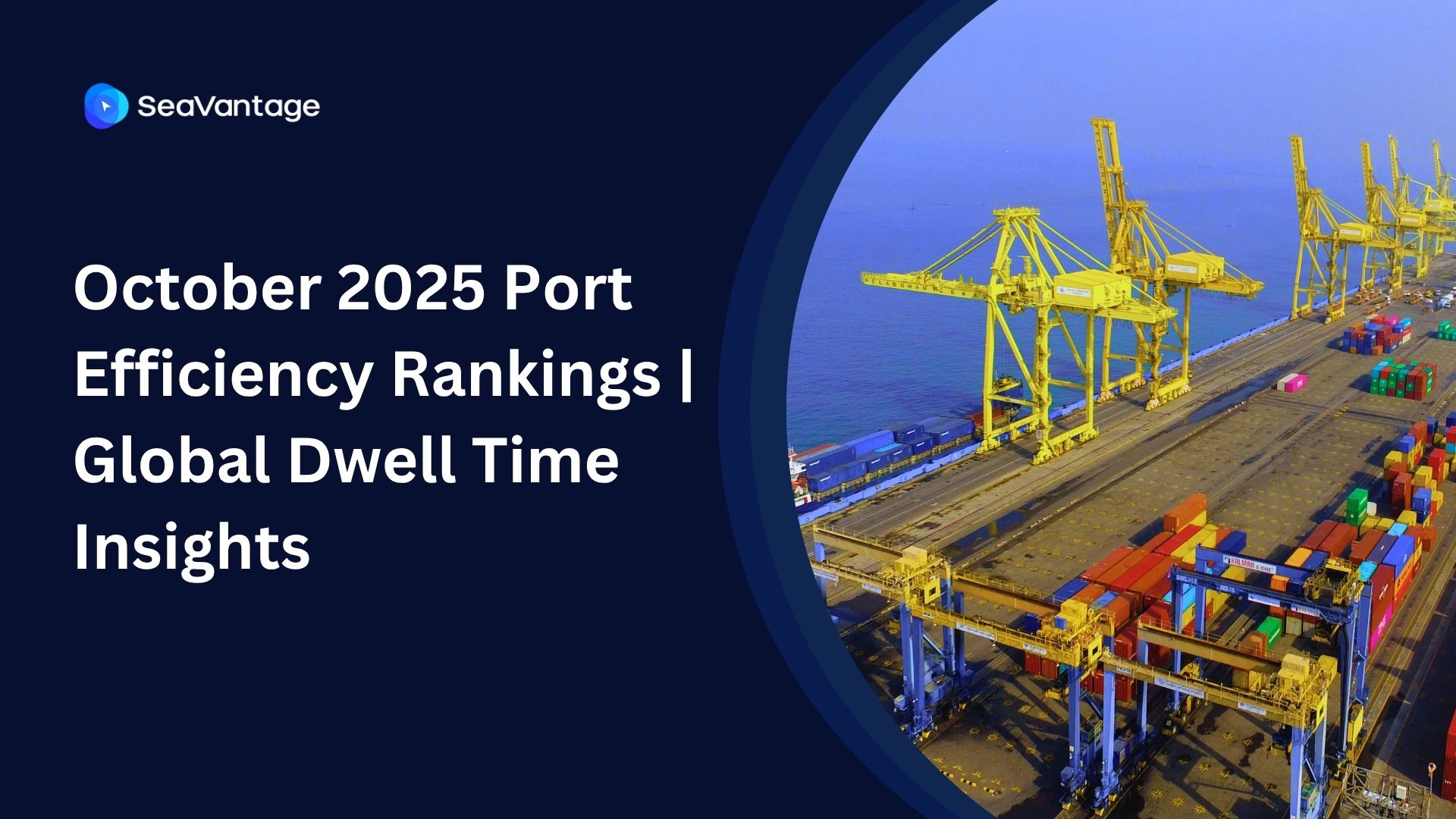

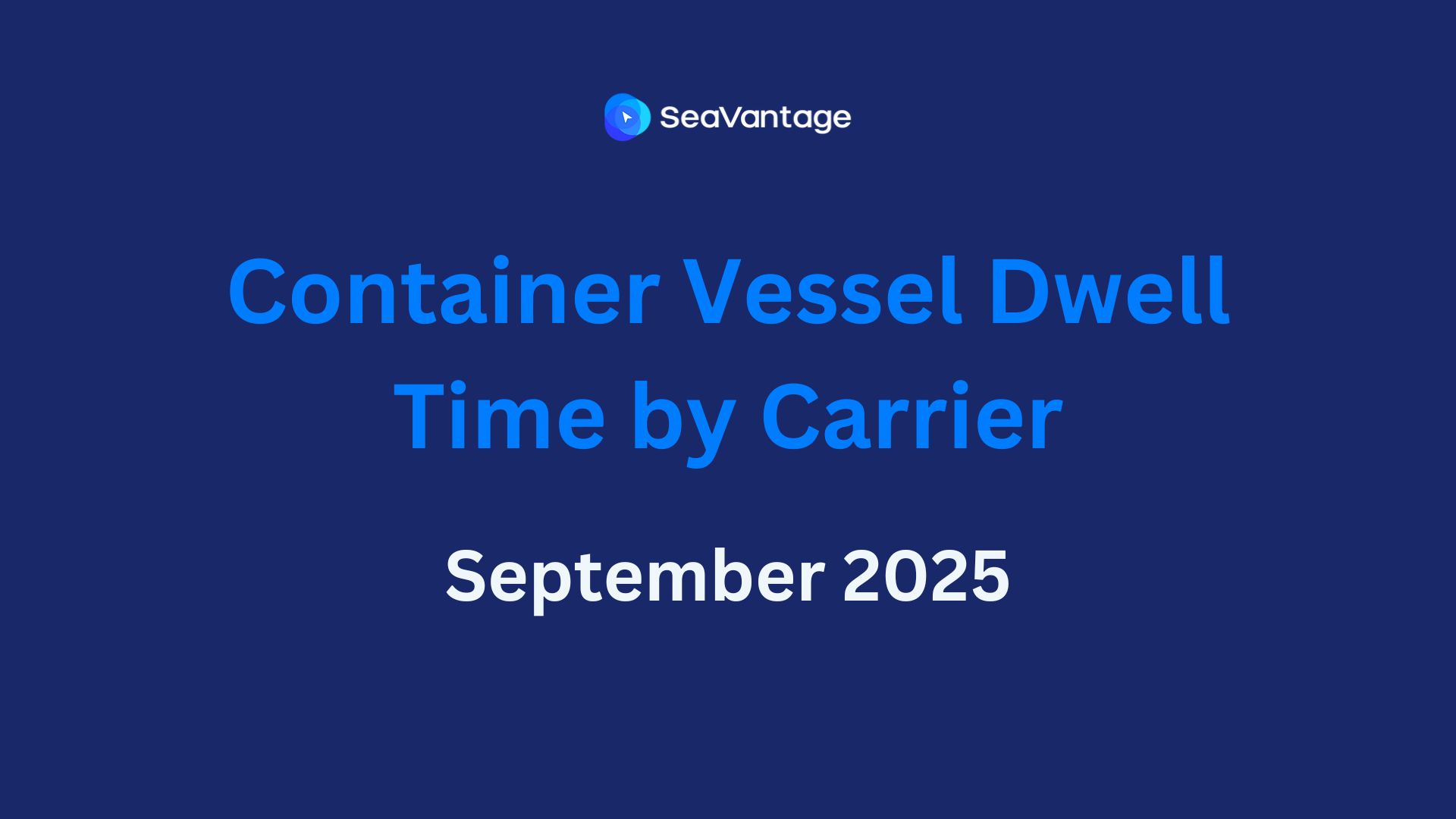
.jpg)

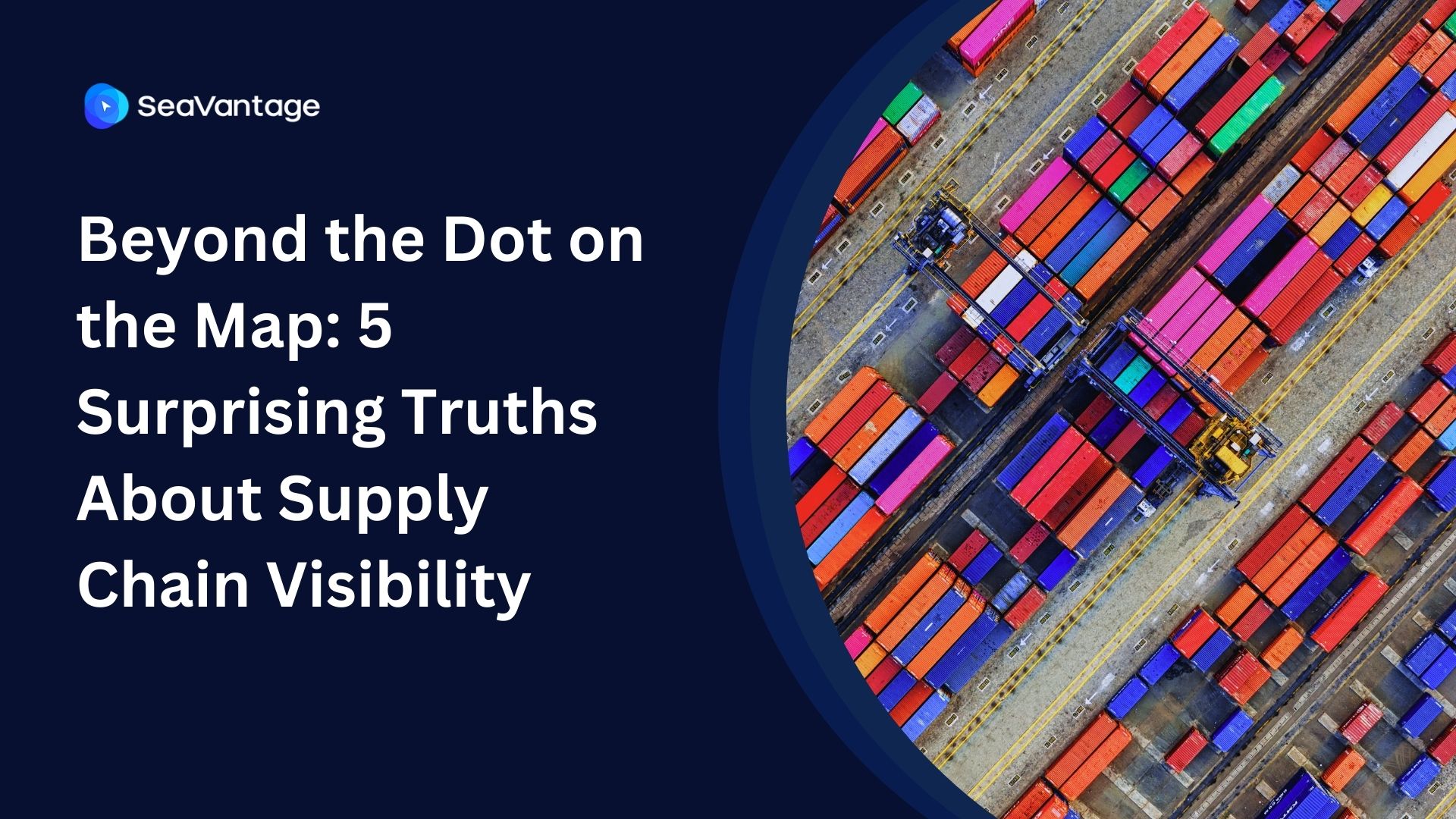
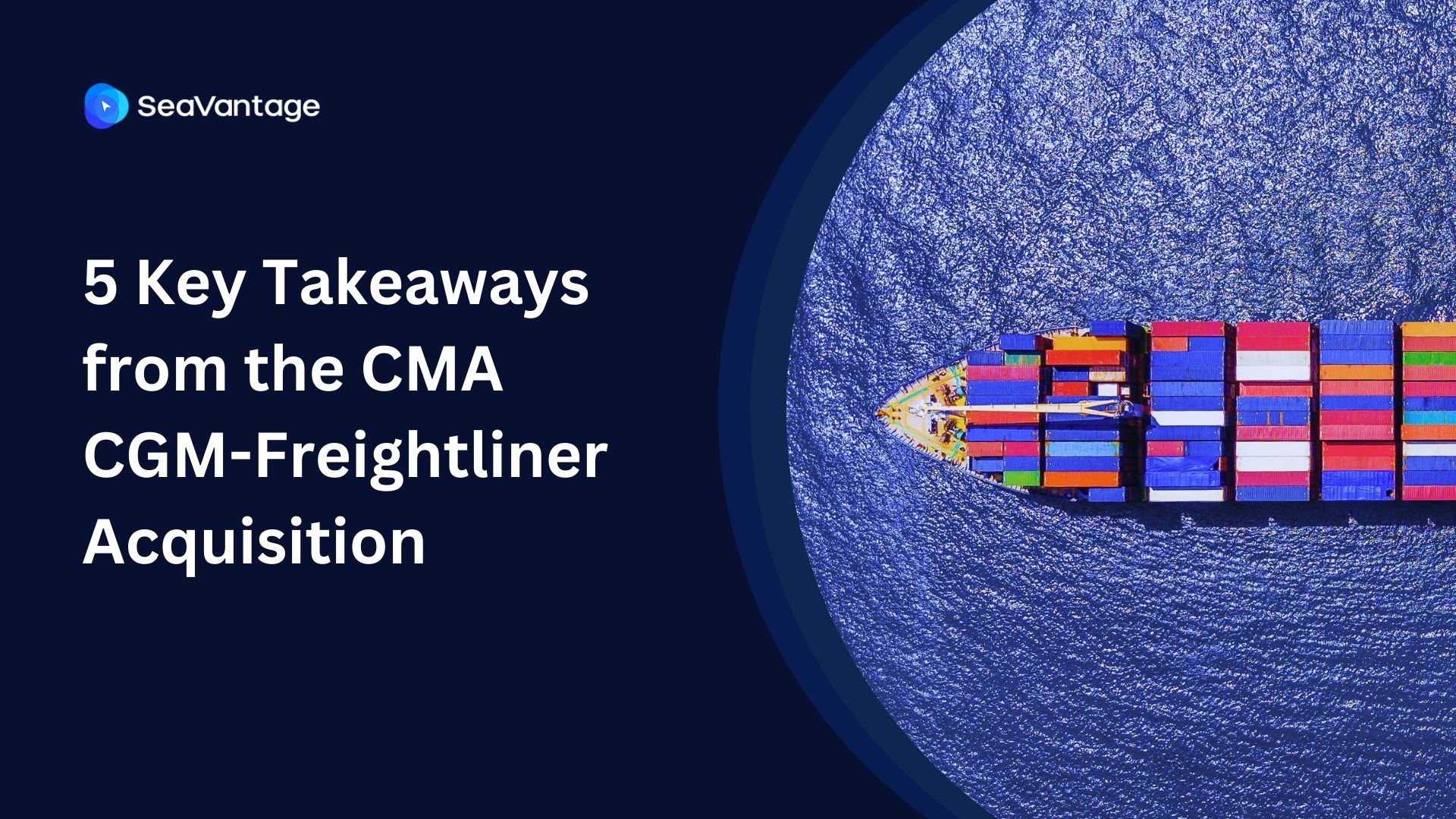
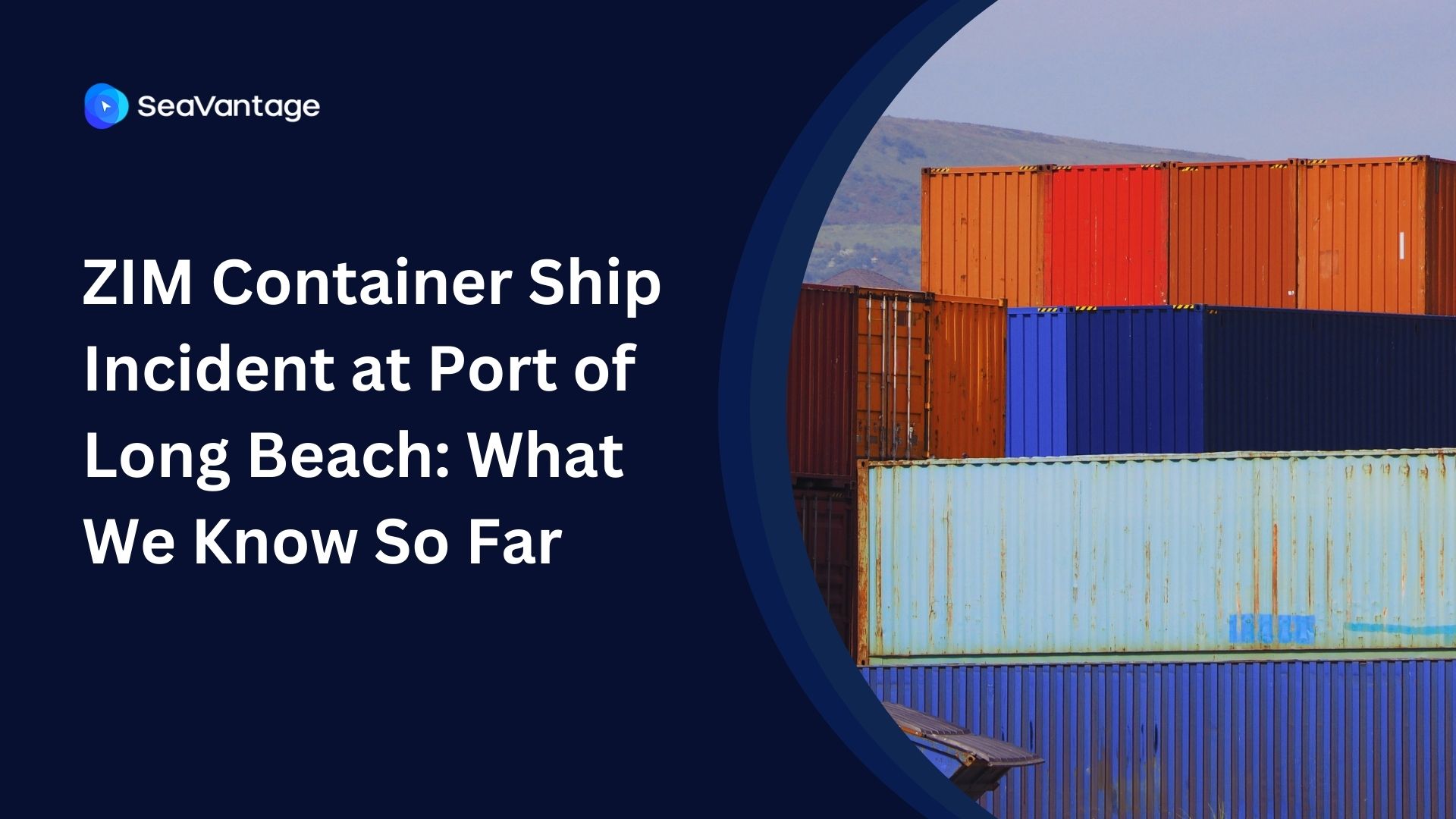
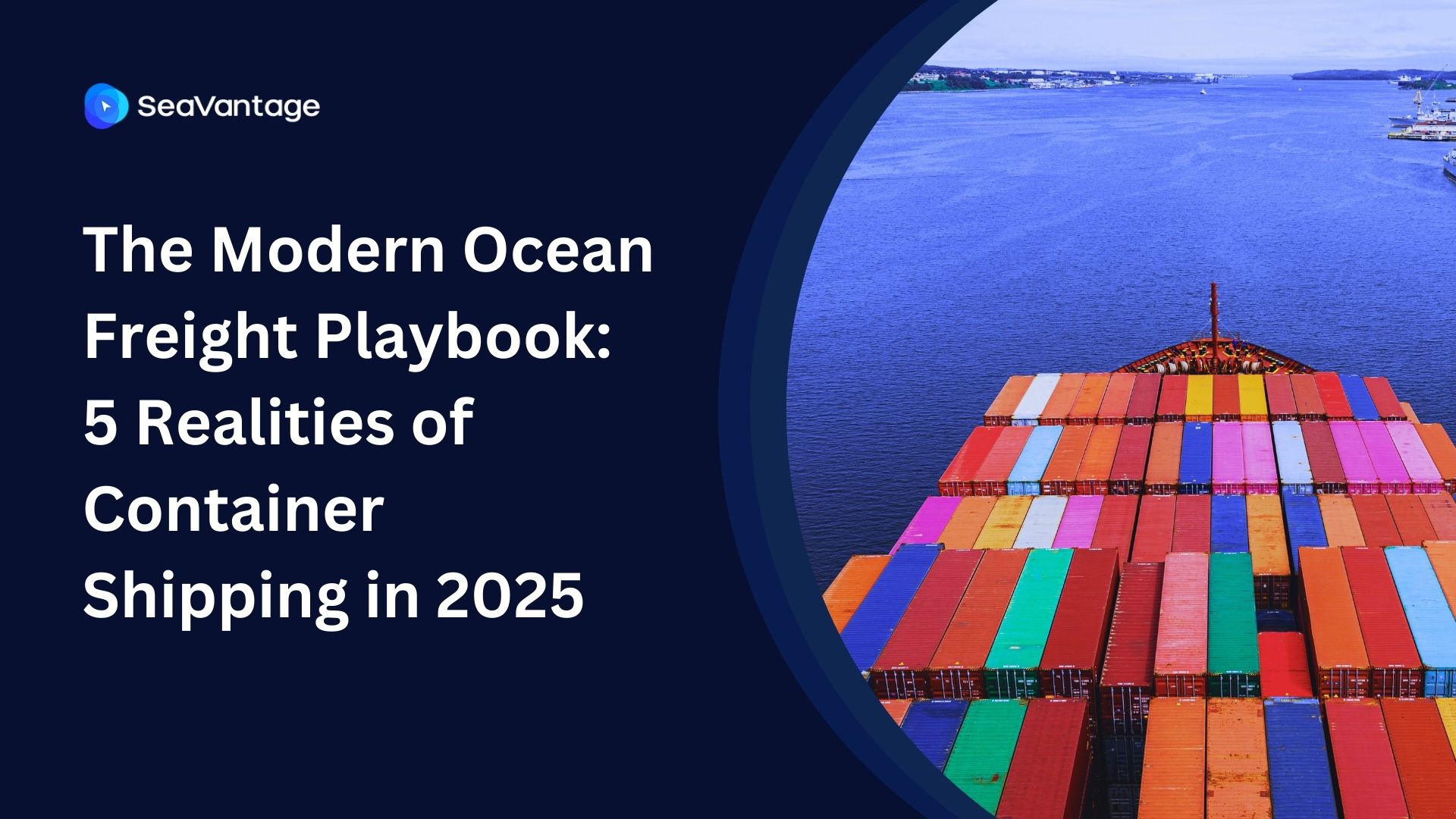



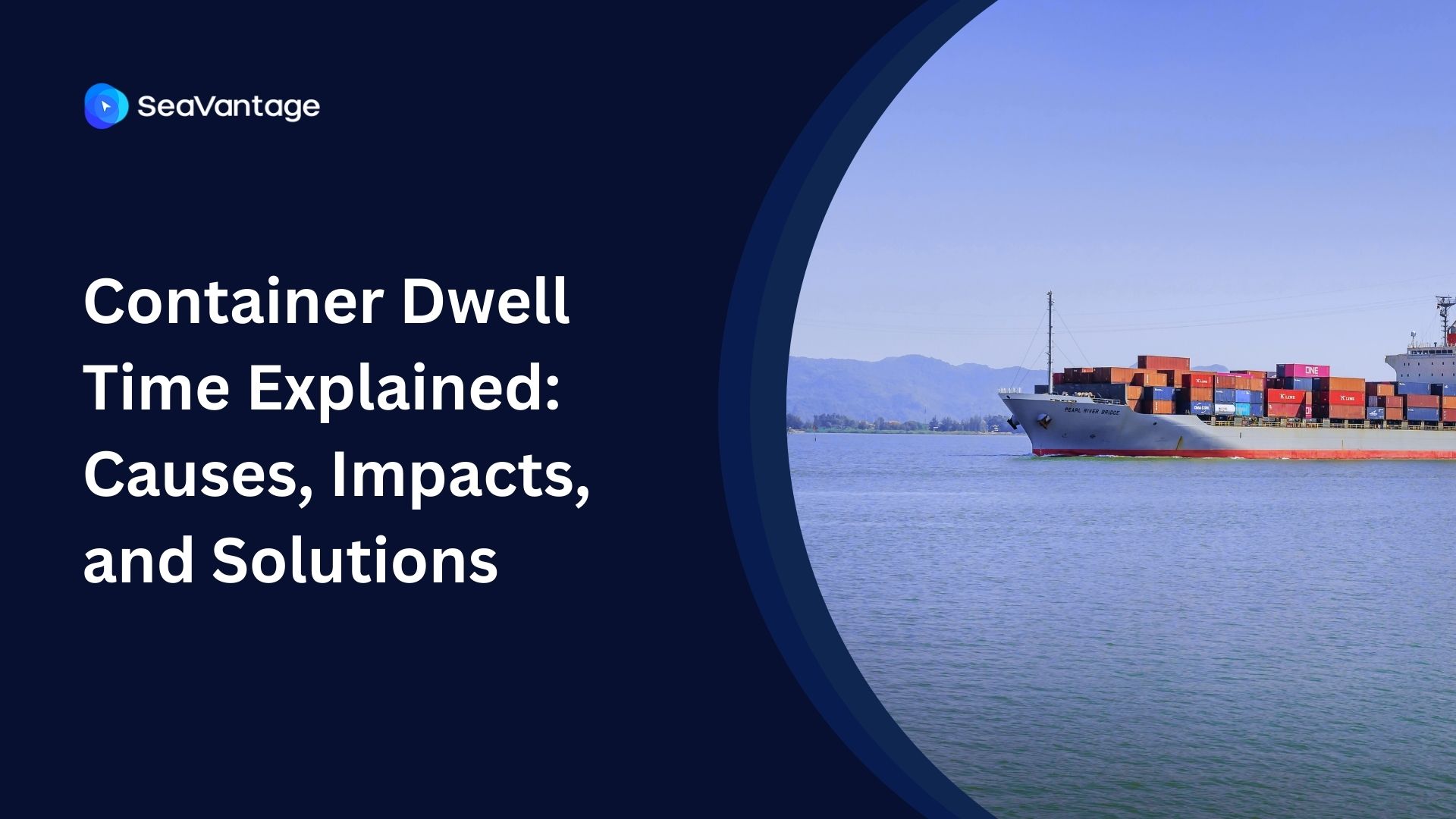
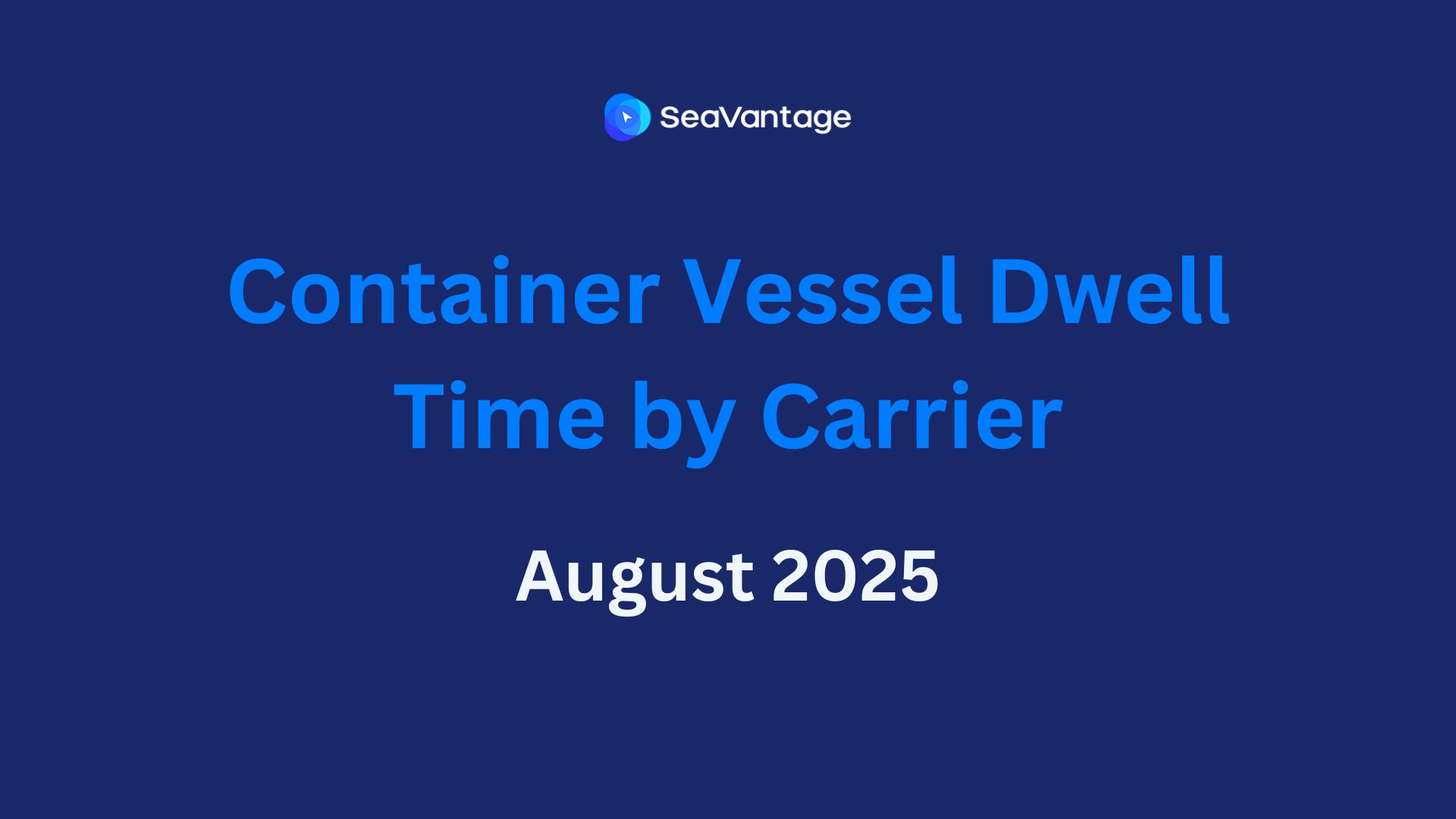
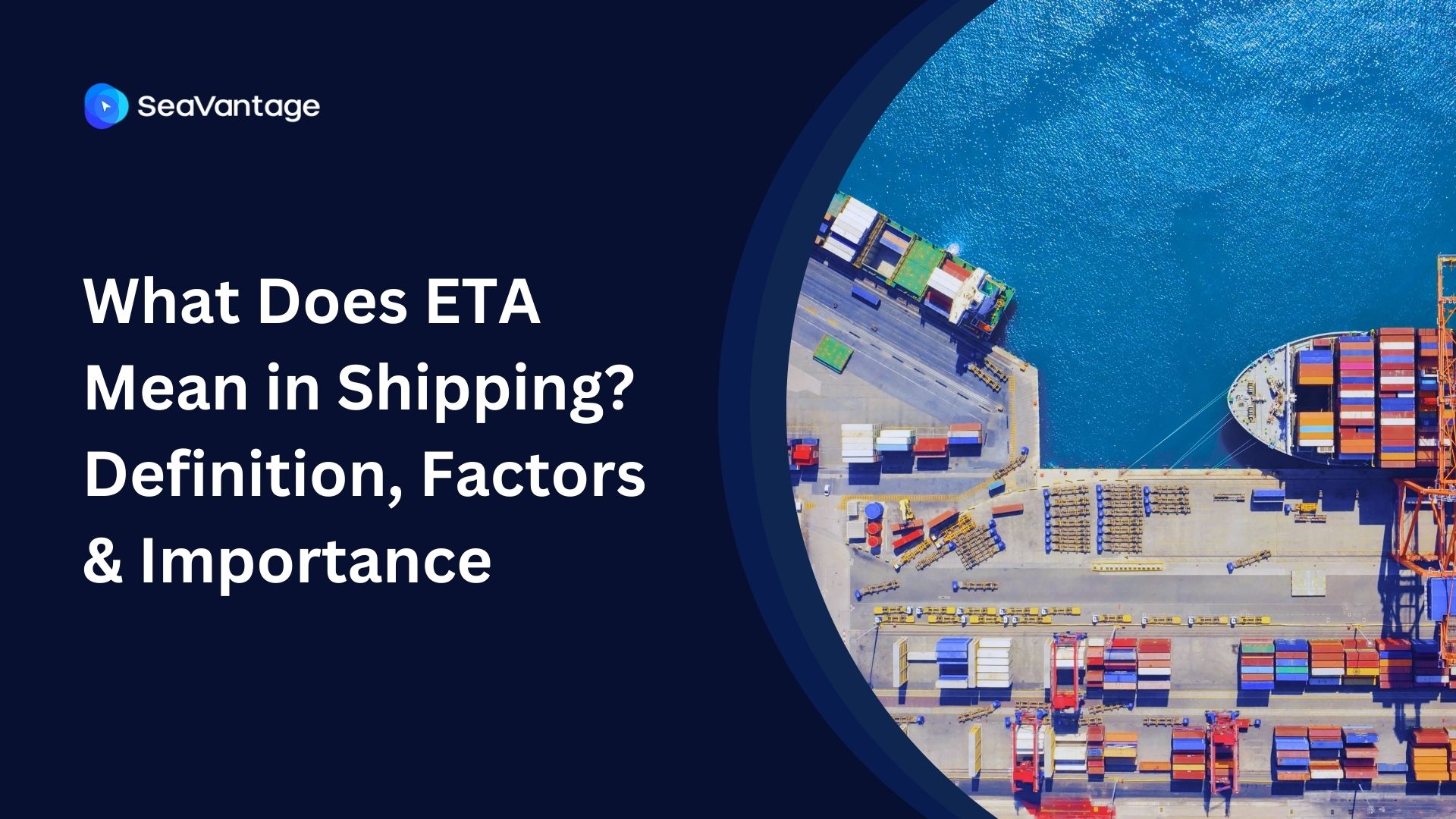
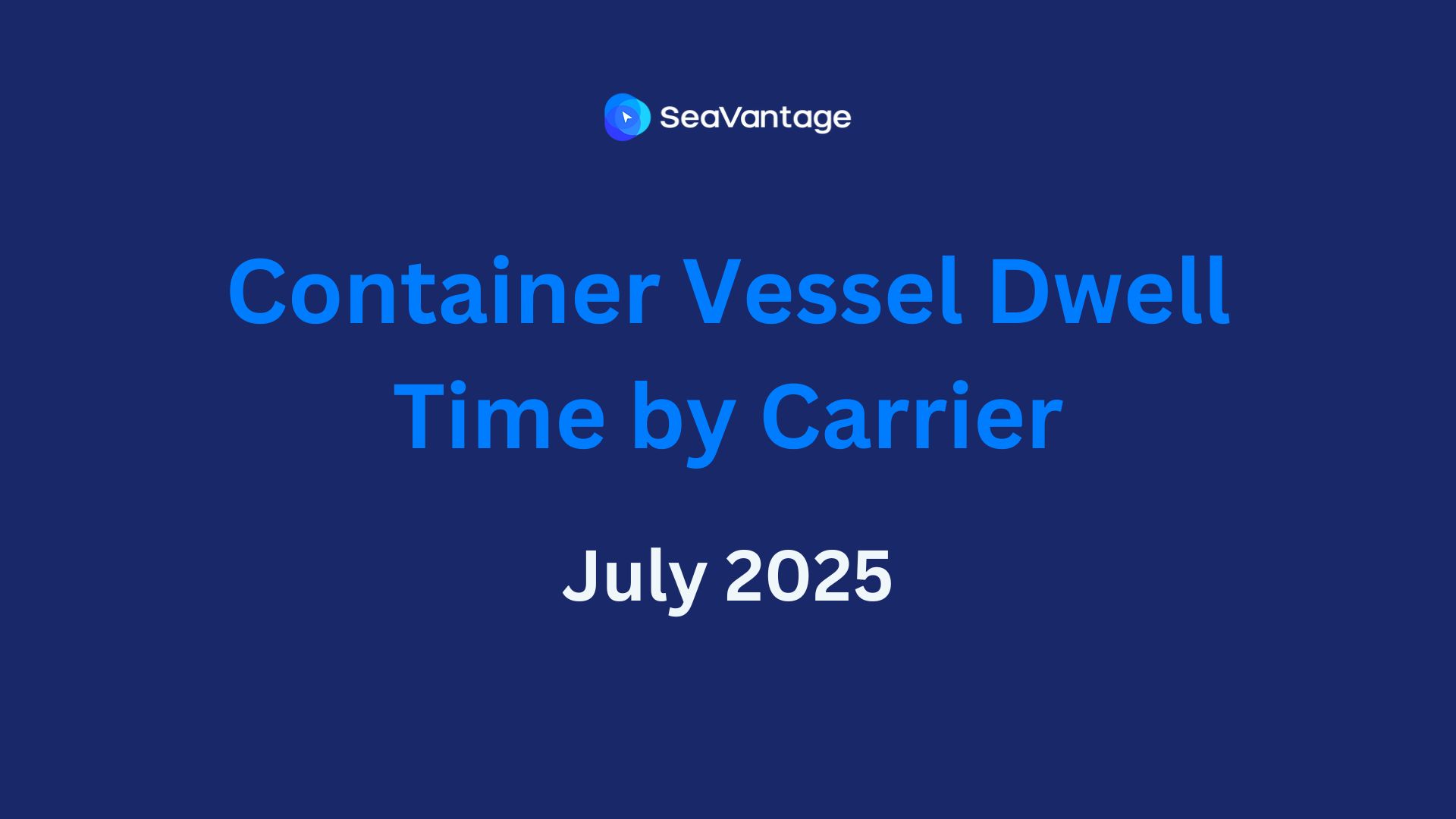
![[Customer Success Story] How SURFF Increased Customer Retention with SeaVantage](https://cdn.prod.website-files.com/649bc60a5baf71dfbdca9fde/688976238bc62feb4b61bb99_Surff%20thumbnail.jpg)
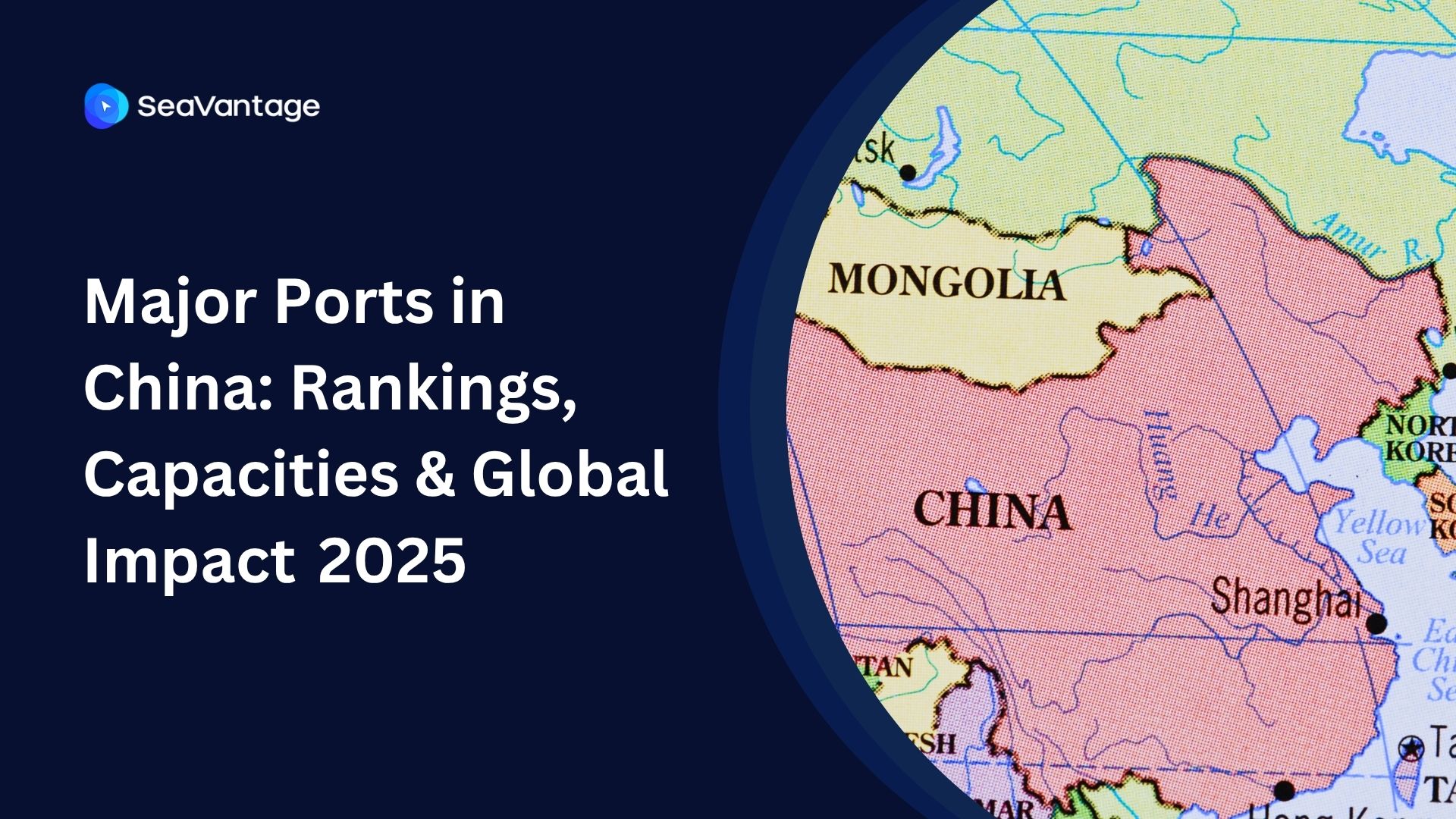
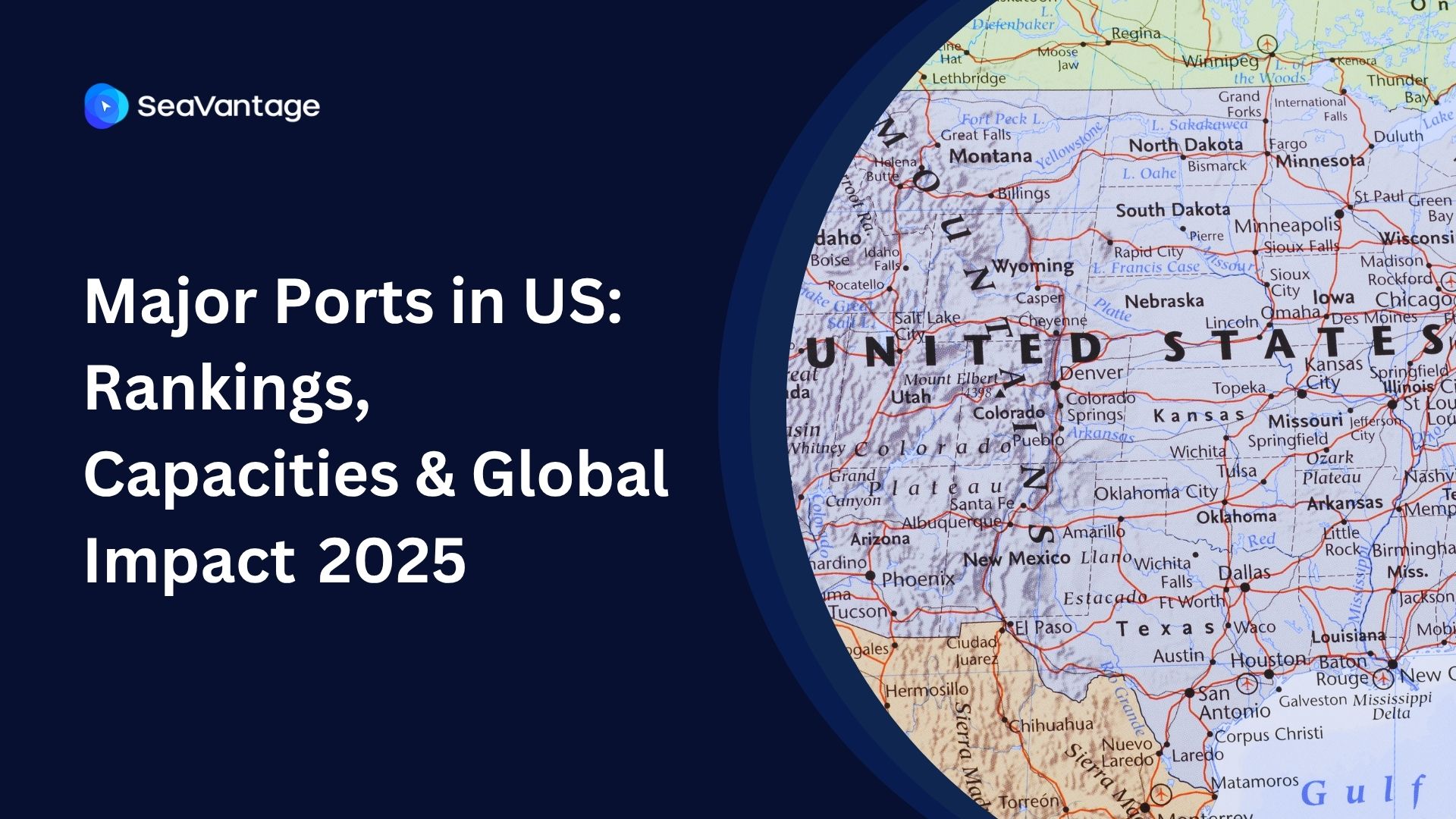




%202025.jpg)








![[Customer Success Story] KOTRA - Enhancing Global Logistics Information Capabilities With SeaVantage](https://cdn.prod.website-files.com/649bc60a5baf71dfbdca9fde/67e27088b52e1733f6cdbde4_SeaVantage_Customer%20Success%20Story_Kotra(EN).png)




%20and%20Its%20Impact%20on%20Maritime%20Shipping.jpg)



![[Customer Success Story] How HMM Transformed Operations with SeaVantage Solutions](https://cdn.prod.website-files.com/649bc60a5baf71dfbdca9fde/67ad4d96280a90c2d0b59903_%5BSuccess%20story%5D%20HMM_Thumbnail_EN.png)


























































.png)